With its unique grain patterns and natural tones, thick and thin wood earns praise for being a beautiful building material. It’s also relatively easy to build with wood. The soft, porous surface makes it easy to join pieces with nails and screws. But, for a truly permanent, strong chemical bond, using the best wood glue is the way to go.
The best wood glues create a chemical bond between two surfaces, soaking into the fibers of the wood. The glue bond is so strong that separating the two pieces of wood often leads to broken boards or shredded wood fibers.
From furniture building, woodworking, and cabinetry making to creating outdoor projects, wood glue can be a critical part of a project. Keep reading to learn more about wood glue, and check out these hands-on reviews of the best wood glues on the market.
- BEST OVERALL: Gorilla Wood Glue
- BEST BANG FOR THE BUCK: Elmer’s Carpenter’s Wood Glue Max
- BEST CA GLUE: Starbond EM-02 Super Fast Thin CA Glue
- BEST HIDE GLUE: Titebond Genuine Hide Glue
- BEST POLYURETHANE: Titebond Polyurethane Glue
How We Tested the Best Wood Glues
I tested each of the glue products on this list to provide real-world, real-life comparisons.
I performed three glue tests: end-grain to end-grain, long-grain to long-grain, and a small miter joint. All of the glues failed end-grain to end-grain (which I suspected they would), so it was the other two tests that told the story. I numbered the glues 1 through 7 in order to evaluate their glue-ups.
First, I cut 14 small blocks from one long piece of pine. Then, I numbered each set and glued them together with the appropriate glue. Next, I cut 14 small mitered joints, numbered them, and then glued them. I used a pin nailer to hold the miter together while gluing. For the blocks, I simply let them be, free of clamps or fasteners. I then waited 24 hours.
Twenty-four hours later, I set out to find out how they did. Armed with a scoring rubric, a chisel (a small one proved ineffective, so I moved to a larger one), and a hammer, I chiseled the long-grain pieces apart. For the mitered joints, I simply pulled until the joint broke apart. I recorded my experiences in the rubric, which I then used to write this guide.
Our Top Picks
The following list is a collection of some of the best wood glues on the market. To ensure that the list only includes top-quality products, I performed hands-on testing with each glue. Check the following section and then continue reading to learn how I tested these wood glues.
Considered the strongest glue on our list, the Gorilla glue is well known for its high-quality glues and tapes, and the wood glue upholds the legacy. This strong PVA (polyvinyl acetate) glue features an indoor-outdoor formula, allowing DIYers to build anything from cabinets to outdoor furniture with the same glue. It’s sandable and dries to a natural color to make hiding joints an easy task. Cleanup requires just a wet rag or a sponge.
During testing, the Gorilla Wood Glue did an excellent job of adhering two pieces of wood with long-grain orientation as well as creating a strong miter bond, making it the strongest wood glue on our list. When pulled apart, the wood gave way before the glue bond, ripping the wood apart. The only real considerations worth mentioning are that the 36-ounce bottle of Gorilla Wood Glue doesn’t feature a handle so application is a little clumsy (though it is available in several sizes), and this wood glue dry time is 24 hours.
Product Specs
- Type: PVA
- Color: Natural
- Cure time: 24 hours
Pros
- Indoor/outdoor formula makes this glue suitable for many projects
- Dries to a natural tan color that matches most wood types
- Versatile formula; stainable for more seamless color on many projects
Cons
- Long cure time compared to similar options; takes over 24 hours to cure
- No handle on 36-ounce bottle; may be difficult for transporting if necessary
2-Elmer’s Carpenter’s Wood Glue Max
High-quality bonds and woodworking projects don’t have to come at a high cost with Elmer’s Carpenter’s Wood Glue Max. This PVA-based wood glue creates bonds that are stronger than wood while also being waterproof, sandable, stainable, and paintable. Application is easy, and cleanup requires a wet rag.
Testing Elmer’s Carpenter’s Wood Glue Max yielded no surprises. The bonds it formed between long-grain sections of wood were stronger than the wood itself. One aspect of the test that stood out is that this glue dried as close in color to the wood as any of the other glues in the test.
Product Specs
- Type: PVA
- Color: Tan
- Cure time: 24 hours
Pros
- Very strong bond between work pieces; suitable for heavy-duty use
- Easily cleans up with water for minimal cleaning after use
- Paintable and stainable for more consistent color on many projects
- Waterproof when cured; suitable for use in wet or moist environments
Cons
- Glue tends to dry up in cap and spout, making bottle tough to reuse
3-Starbond EM-02 Super Fast Thin CA Glue
Starbond’s CA glue isn’t a traditional wood glue, but it certainly has its place in the workshop. This glue features an incredibly thin formula that is able to penetrate tiny cracks and stabilize wood. It also creates instant bonds, which can allow a woodworker to use it in conjunction with stronger glues to avoid clamping while the glue dries. The kit comes with several nozzles and tips, allowing the user to apply this CA glue with pinpoint accuracy.
During testing, Starbond’s CA glue certainly made a case for itself. It didn’t create the strongest bonds, but it did create the fastest. The bottle was easy to use, and the additional nozzles are a nice touch. When I intentionally ripped the glue pieces apart 24 hours later, the bond did tear some wood fibers out, which really impressed me.
Product Specs
- Type: CA
- Color: Clear
- Cure time: 10 to 15 hours
Pros
- Adheres extremely quickly compared to similar wood glues; only 10 to 15 hours
- Comes with plenty of extra nozzles for different application types
- Bonds well between flat surfaces; suitable for gluing planks of wood together
- Appropriate for a variety of surfaces and tasks; wood, metal, stone, and more
Cons
- May adversely affect wood, such as the sap lump created in testing
- Bond is not very strong; not suitable for heavy-duty applications
4-Titebond Genuine Hide Glue
Hide glue might not appeal to everyone’s sensitivities, but there isn’t any denying its usefulness. Titebond Genuine Hide Glue features a similar formula to those used in antique furniture building. Applying this glue to an existing repair can reactivate the old glue and create a strong bond, but it’s suitable for new projects as well. This hide glue begins to dry in 25 minutes, and it fully cures in 24 hours.
I found that this Titebond wood glue is best reserved for antique projects, as it doesn’t create as strong a joint as the PVA glues, despite having a similar dry time. After separating the long-grain blocks, I found that the glue was still slightly tacky, and none of the fibers from the wood separated. However, it was still an effective bond that took effort to break.
Also, if you have a dog, it will probably be at your side whenever you use this glue. My dog tried stealing the bottle on two occasions, which may sound funny, but since this glue could cause digestive distress for your pup, keep it out of your pet’s reach.
Product Specs
- Type: Natural protein solution
- Color: Transparent amber
- Cure time: 24 hours
Pros
- Offers a flexible bond for a variety of applications on soft, medium, and hardwood
- Nontoxic formula can be used in homes with children and pets
- Suitable for wood and leather surfaces; perfect for furniture, crafting, and clothing
Cons
- Bond not as strong as traditional glues; may not be suitable for all clothing
- This glue is made from animal tissue; not a cruelty-free choice
- Cure time may be longer than stated on the package
Anyone looking for one glue to handle all their bonding needs, including woodworking, may want to give Titebond Polyurethane a look. This polyurethane-based glue adheres to wood, metal, ceramic, plastic, solid surfacing, stone, brick, foam, and glass. It applies easily and doesn’t run as much as a PVA glue might. Once applied, users have 25 minutes to get their workpieces in place, and the glue cures in just 4 hours.
The Titebond Polyurethane Glue was the big surprise of the glue tests. I wasn’t sure how a multipurpose glue would do, but the bonds it created in both the long-grain and miter tests were very strong. It also didn’t put off any odor or fumes. The only issue I found with this polyurethane glue was that it did expand without clamps, which means clamping or mechanical fastening is absolutely necessary. Also, this glue does not clean up like PVA glue, and it will stain skin.
Product Specs
- Type: Polyurethane
- Color: Brown
- Cure time: 4 hours
Pros
- Versatile formula; bonds multiple surfaces including metals, ceramics, and more
- Surprisingly strong bond compared to similar wood glues; suitable for heavy-duty applications
- Waterproof when cured; suitable for use in wet or moist conditions
Cons
- Expands if clamps are not used; clamps may need to be purchased separately
- Cleanup requires mineral spirits or sanding; may need to be bought separately
- Stains skin if accidentally applied; caution recommended while using this glue
What to Consider When Choosing the Best Wood Glue
Before choosing just any old glue off the shelf, there are a few points that many smart shoppers consider. The following sections outline some of the most important features to keep in mind when shopping for and comparing the best wood glues. Understanding these points could make the difference between a successful project and a repair gone wrong.
Types of Wood Glue
When shopping for adhesive, it’s hard not to notice that there are multiple types of glue—rather, there are five main varieties. With the exception of hide glue, which is made of animal collagen, most wood glues are synthetic polymers or resins that are stronger than wood. In addition to chemical makeup, these glues also differ in terms of bond durability, flexibility, toxicity, and waterproofness. Some may even affect a wood’s finish more than others.
Polyvinyl Acetate (PVA)
Polyvinyl acetate (PVA) is a rubbery synthetic polymer that creates a flexible, permanent bond. This wood glue is nontoxic (except when ingested), water-soluble (thinned by stirring in small amounts of pure water), and ideal for a wide range of projects, especially for nonstructural wood-to-wood bonds. White varieties of PVA are designed for indoor use, while yellow varieties (also called “carpenter’s glue”) are formulated for outdoor use.
PVA will leave a residue, affecting your wood’s finish—especially oak. Another drawback is that PVA does not accept wood stains very well. Staining the dried glue will result in a patchy look. Be sure to wipe away any excess glue with a wet rag or sponge before it is dry.
For best results when using PVA glue, press the pieces of wood together with a clamp until the glue is dry. If clamping is not possible, add pressure by hand for a few minutes. Then allow air circulation (from an open window or a fan) to create a strong bond.
Know that PVA glues are basically permanent. Once dry, the glue cannot be removed.
Polyurethane
Polyurethane is a synthetic plastic resin that creates tight, lasting bonds.
Used for everything from paint to wood floor finishes, polyurethane is a primary ingredient in many wood glues. These wood glues excel when splicing boards together like connecting two lengths of crown molding. It forms flexible, durable joints.
Polyurethane is moisture activated, meaning it relies on the moisture in the air to set, so it bonds very well in humid conditions, unlike other wood glues. It also doesn’t dry out sensitive wood fibers.
If you intend to stain the wood, polyurethane goes on more easily than PVA. Still, remove any excess glue with mineral spirits. Water is not strong enough.
Cyanoacrylate (CA)
Cyanoacrylate (CA) is a quick-drying acrylic resin—and another name for superglue.
Once cured, cyanoacrylate bonds are very hard and rigid, which is helpful if you only need to create a temporary bond—a couple of taps of a hammer or mallet will break it. CA glue can be used to apply glue blocks, or short strips of wood designed for reinforcement, to the back of a fresh furniture joint for as long as they’re needed.
Hide Glue
Hide glue is the all-natural choice for wood furniture repair. Basically boiled animal collagen, hide glue comes in two forms: liquid and solid crystals melted in a hot water bath and applied with a brush. The liquid at room-temperature hide glue utilizes urea crystal additives to keep it fluid and allow more time to work. Hot glue, in contrast, will cure as it cools, which is soon after application.
Today, woodworkers choose both forms of hide glue primarily for the leeway (i.e., reversibility) it offers as it dries and its natural lubricating properties. It creates lasting, yet flexible joints, which is why many antiques are still repaired with hide glue. Using this adhesive preserves the quality of antiques and honors traditional craftsmanship, making it the best wood glue for furniture of bygone eras.
In liquid form, hide glue provides more time to perfectly fit two pieces of wood. When fully set and dried, it is an excellent choice for furniture construction and other tight, lasting bonds. Both types of hide glue are often used in guitar and stringed instrument construction.
Epoxy
Epoxy is the best wood glue for filling in gaps and cracks. Unlike the liquid texture of other wood glues, epoxies thicken to a putty-like consistency. This wood glue is a two-part formula, consisting of a resin and a hardener that interact right at the time of application.
Epoxy glue works best with clean, dry, and sanded surfaces. First, wipe the wood with an appropriate cleaner to remove any dust, waxy buildup, or other residues. Next, gently buff the surfaces with paper towels and air-dry fully. Finally, make sure the wood is sanded and ready to join. Mix the two-part epoxy and apply according to package directions.
Dry Time
One of the most important considerations to keep in mind when choosing the best wood glue is how long it will take to dry. PVA glue invariably takes a very long time to dry, while CA glue can adhere on contact.
Here’s a rundown of what to expect from each glue type:
- PVA glue can create a relatively fast initial bond, but full cure usually won’t occur for 24 hours.
- CA glue can cure in less than a minute.
- Epoxies can cure in under 10 minutes.
- Polyurethane glues can cure in just a few hours.
- Hide glue can take 24 hours to cure, but the bonds are reversible with steam at any point.
Keep in mind that the above is the amount of time it takes the glue to cure, not the amount of time it takes them to hold. Many glues only require clamping for a few hours before clamps can come off.
Shelf Life and Storage
Shelf life and storage methods are incredibly important, as they can determine the best product and the appropriate size of that product to buy. For instance, shoppers can get excellent deals on large bottles of PVA glue, but PVA glue has a shelf life of roughly 1 year. After that year, its bonding capabilities diminish a bit, which means a large jug could potentially go to waste.
Polyurethane and hide glue also have shelf lives of roughly 1 year, after which the hide glue deteriorates and the polyurethane will begin hardening from absorbed moisture. CA glues can last up to 10 years if stored unopened in a freezer where moisture won’t seep into the bottle.
Color
Depending on the application, project, or repair, the color of the wood glue might be worth considering. For glues that don’t sand particularly well, such as epoxies, finding a product that closely matches the wood or stain color can be critical.
While many folks might not be keen on using an animal-based adhesive such as hide glue, it has a major benefit: it hardly affects stain penetration and color. Hide glue rarely shows when it comes to staining woodworking projects and joints. The exception is that when it’s painted with latex paint, it can start to crack or bubble.
Viscosity
Wood glues come in a variety of consistencies or viscosities. For example, CA glue is very thin and can flow into hairline cracks with relative ease. This is excellent for small repairs, splitting wood, or even small chips of wood that need to be glued back in place.
PVA glue is thicker than CA glue, though it can be a little runny. While it’s thick, PVA glue soaks into the wood fibers quickly to provide close, accurate joint assemblies.
Even thicker are polyurethane and epoxy glues. Polyurethane glues can actually expand while drying, requiring secure clamping pressure to achieve an accurate joint. Epoxies are so thick that they can fill cracks and joints, drying in place and restoring the strength and uniformity of a board.
Source : https://www.bobvila.com/articles/best-wood-glue/





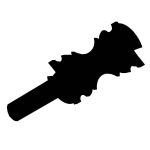
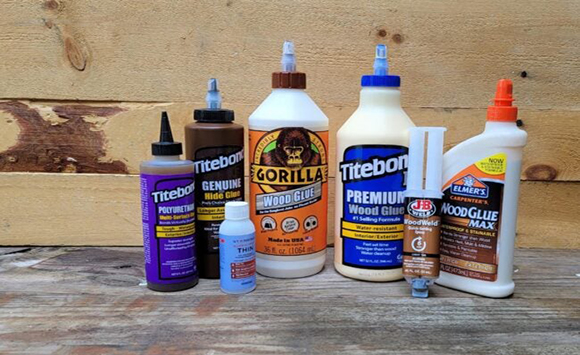
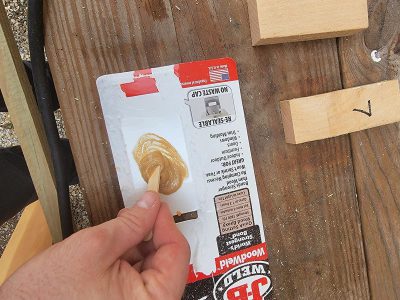

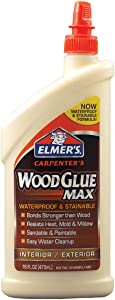
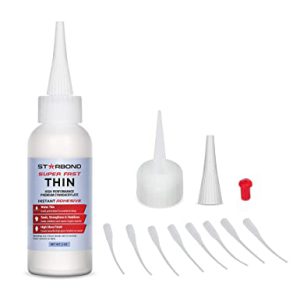








it was helpful thank you
The Best Wood Glues Tested in 2023 – Mrchiwood.ae
[url=http://www.gjj0x7tis09894u3bxza1ib56y957i82s.org/]ucwhhpyoocg[/url]
acwhhpyoocg
cwhhpyoocg http://www.gjj0x7tis09894u3bxza1ib56y957i82s.org/